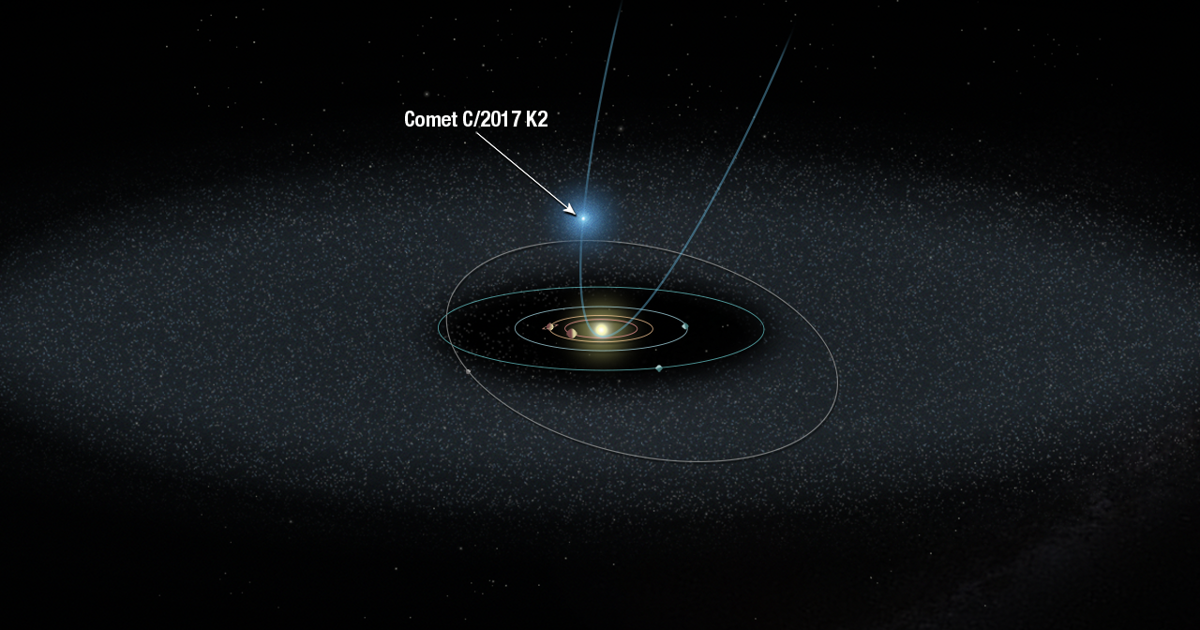Comet K2 passes closest to Earth today | Weather Blog

Comet C/2017 K2 (PanSTARRS) makes its closest pass to Earth today as it heads toward the sun, but it will still be about 168 million kilometers away from us at its closest point.
This comet was first spotted in 2017 by astronomers using the Pan-STARRS survey instrument in Hawaii, which is why it’s part of its name. According to NASA, in May 2017, “it was the farthest active incoming comet ever found, discovered when it was about 2.4 billion kilometers from the Sun. This put it between the orbital distances of Uranus and Saturn”. These astronomers were able to see it from so far away because comet K2 is either very large or very active. The size has been the subject of debate ever since, “early observations from the Canada-France-Hawaii Telescope suggest a core with a diameter of about 18 to 100 miles (30 to 160 km). But observations with the Hubble Space Telescope indicate that the nucleus should be smaller, around 11 miles (18 km) or less,” according to EarthSky. If it’s not large, then it’s very active, which can be judged based on the size of the coma that surrounds it. Comet K2’s coma has a diameter of about 81,000 miles, about 10 times larger than the diameter of Earth. Early observations also suggest that Comet K2 has a tail about 500,000 miles long!
Image credit: NASA, ESAand A. Feild (STScI)
If you want to look for Comet K2 in the sky tonight, you’ll need a dark viewing spot and a telescope. Comet K2 isn’t bright enough to see with your eyes alone, but even a small telescope should be able to pick it up. The full moon also adds a lot of light to the night sky, making this already dark object even harder to spot. You should be able to see Comet K2 in your telescope until early September, but today it will be at its closest point to Earth, giving you the best chance of locating it.



